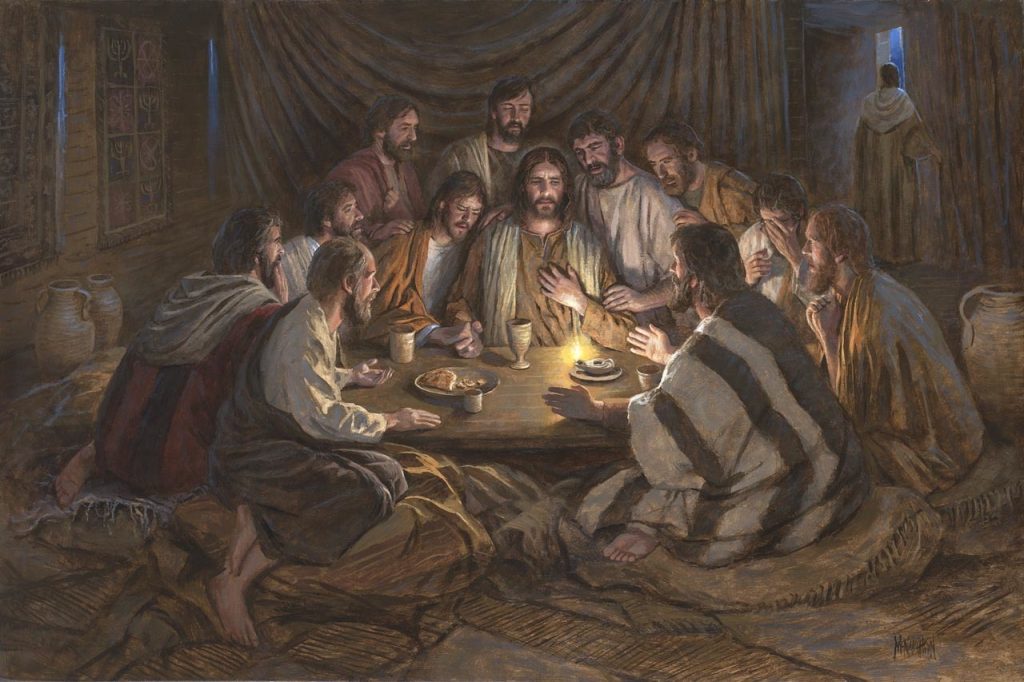

Understanding the Eucharist
THE BODY AND BLOOD OF CHRIST – CORPUS CHRISTI – 3 June 2018
The Feast of Corpus Christi, or the Feast of the Body and Blood of Christ (as it is often called today), goes back to the 13th century, but it celebrates something far older: the institution of the Sacrament of Holy Communion at the Last Supper. While Holy Thursday is also a celebration of this mystery, the solemn nature of Holy Week, and the focus on Christ’s Passion on Good Friday, overshadows that aspect of Holy Thursday.
At the request of Pope Urban IV, St. Thomas Aquinas composed the office (the official prayers of the Church) for the feast. This office is widely considered one of the most beautiful in the traditional Roman Breviary (the official prayer book of the Divine Office or Liturgy of the Hours), and it is the source of the famous Eucharistic hymns “Pange Lingua Gloriosi” and “Tantum Ergo Sacramentum.”
For centuries after the celebration was extended to the universal Church, the feast was also celebrated with a eucharistic procession, in which the Sacred Host was carried throughout the town, accompanied by hymns and litanies. The faithful would venerate the Body of Christ as the procession passed by. In recent years, this practice has almost disappeared, though some parishes still hold a brief procession around the outside of the parish church.
WHAT IS ON THE SANCTUARY?
The following furniture and fittings are present on the sanctuary during the celebration of Mass.
| SANCTUARY | The sanctuary is the front part of the church from where the Priest stands during Mass. It is usually elevated from the nave, where the congregation sits. |
| THE ALTAR | The altar is the table where the Priest celebrates the Eucharist and reminds believers that this is a special meal. We bring our gifts of bread and wine to the altar. They become Jesus’ Body and Blood. |
| CANDLES | Candles are used in Catholic worship to represent the light of Christ. During Mass, candles may be held on either side of the Priest as he proclaims the Gospel. At least two candles are placed on or near the altar. |
| PRESIDER’S CHAIR | The Priest celebrating Mass sits on the presidential chair during some parts of the Mass. Every Catholic church has a presider’s chair. In a cathedral the chair is called a cathedra. It is for the Bishop or Archbishop. |
| TABERNACLE | The tabernacle is where the Consecrated Hosts, which have not been used during Mass, are kept. There is a red light left on somewhere close by to remind us that Jesus is present in the hosts. |
| LECTERN | During the Mass, the Word of God is read from the lectern. This helps to remind us that what believers are hearing is important and worthy of paying special attention to. The lector is the person who reads the First and Second Readings during Mass. Then the Priest or a Deacon reads the Gospel. |
| CRUCIFIX | A crucifix, a cross with the figure of Jesus, is always clearly visible during Mass. The crucifix reminds us that Jesus died and rose again to new life. |
| STATUES AND IMAGES | Statues or images of Jesus, Mary and the saints are in the Church to inspire us try to live like they did. |
| CREDENCE TABLE | This is the table where the items that are going to be used for the Mass are stored. |
| SANCTUARY LAMP | The red light near the tabernacle is known as the Sanctuary Lamp. A lit Sanctuary Lamp signifies the presence of God in the tabernacle that contains the Eucharist. |
#ExpectGreatThings


© Infant Jesus School 2017
17 Smith St, Morley WA 6062
Tel: (08) 9276 1769 | Fax: (08) 9276 2998
Website by Chameleon Logic








